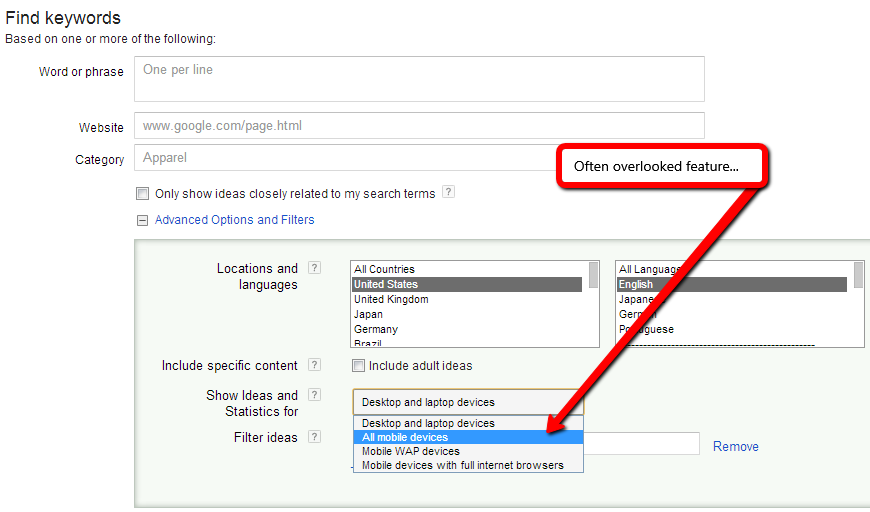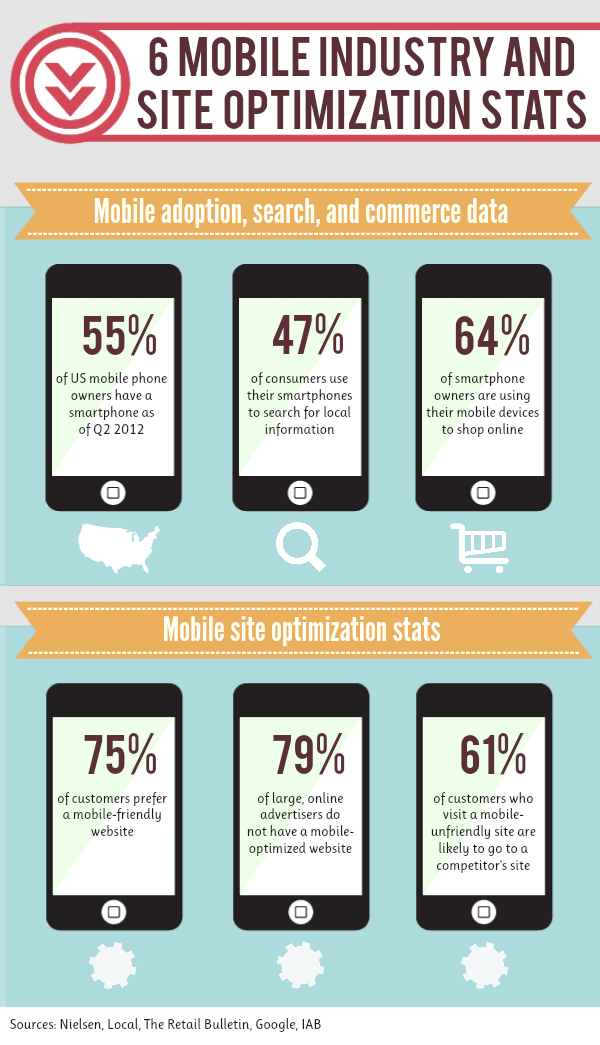Mobile SEO Best Practices & SMS Mobile Marketing
Last updated: May 3rd, 2023
So you want to go green mobile do you? With the ever changing face of the web, one cannot be surprised to know that a vast number of total searches being conducted are coming from smartphones or other mobile devices. Just take a look around you. What do you see?

My guess is that on any given day, the sight in front of your eyes most likely resembles the picture on the right (not the wall color or room style of course… the reference here is towards…… the mobile craze!)
Yes, everyone and their grandmother is capable of using a smartphone, but more importantly, everyone is using a mobile device that has search capability. To be honest, you hardly ever see people using the 90s-style cell phones that only had the number pad (and no internet capability). Phones like that are mainly used as throw-a-ways for the person traveling around the globe, along with cheap SIM cards to boot. Please do share your mobile habits in the comments below though, I’m curious to know if my personal theory is correct. What kind of phone user are you? Do you carry around the $10 Nokia model or are you a smartphone warrior?
SEO is a big business. Mobile is a massive business. Combine the two items together and you have a really big animal to contend with.
Why Is Mobile SEO & Marketing Important?
Let’s start off with a simple infographic for the visual learners in the crowd:

Mobile SEO and marketing to those on a mobile device are important because the mobile market has already invaded the scene! Those who are not currently in the mobile game are now forced to play catch-up. Some things to keep in mind when dealing with the mobile market are:
- Algorithm Factors
- End User Experience
- Searcher Intent
- Growing Market Share
Algorithm Factors
Perhaps you haven’t heard it yet or maybe you did and it just hasn’t sunk in… but Google now ranks websites (that have the best mobile infrastructure) higher in the SERPs. Google cares about the user experience, or so the saying goes. The issue to point out here is that Google has not always been consistent with their mobile policies. There has been a bit of flip flop going on. Back in 2011 when Google announced the GoMo initiative, there was a big craze and an endorsement from Google themselves, to get a mobile version of your website up and running with a “m” sub-domain… example: m.google.com – fast forward 7 months or so into the future and they reversed what they claimed to be truth, saying that although the sub-domain of “m” is an acceptable method for going mobile, it is actually more difficult to index properly when compared with responsive web design.
As you know, without their user base, they have nothing. With that in mind, it is understandable that they want to make certain, the mobile searches are actually what users really want to see AND experience. This is critical to their business model. There have always been factors at play in the mobile search market in regards to technical algorithms, but now things are really getting serious. The thing is… businesses want to get serious too, but lack the direction of what mobile strategy will be future proof. Many people employ the “m” sub-domain technique today and do just fine, while others swear that responsive web design is the only way to go. Personally, both methods are acceptable. In my own view:
- Responsive web design is easier from the redirection standpoint, since there is no redirection and you don’t run any risk at all – other than trying to figure out how to display your content appropriately to both low bandwidth devices and traditional desktops. It’s a fine balancing act really, though with the increase in network speeds and data plans, the issue of displaying data-heavy material is slowly becoming moot. The downside to responsive web design is of course the load time for data-heavy websites. Since load time is also an important factor in ranking, it’s a little bit of cat-and-mouse in terms of usability/design vs load/ranking.
- Redirection based HTTP headers or Javascript are fine as long as you implement them properly, which more often than not – is NOT the case. There is also the fact of having to create twice as much design content for both versions of your web property.
1) Faulty Redirects
One of the first items to tackle when working on your mobile SEO, is the use of improper redirects and/or software. Misleading redirects have been dealt with appropriately in the “desktop realm” of computing and web browsing, yet it hasn’t caught on to the mobile arena… until now. For a quick intro into what Google has been talking about lately, take a look at the image below:

If this image doesn’t make sense to you, fear not – for it is about to be explained. Whether you know it not, a majority of websites over the past couple of years have been redirecting their mobile users to the mobile-homepage of the website, instead of redirecting them to the proper mobile equivalent webpage.
Example: If someone arrives on a page of your website that is all about green sweaters, they better be redirected to the mobile version webpage of green sweaters… NOT the mobile homepage equivalent of the desktop website homepage. By looking at the previous photo, you can get a visual representation of what the majority of people have been doing. Most people have either gotten lazy and found a script online to use that just sends everybody to the homepage mobile version, or they simply don’t know any better.
That kind of attitude won’t cut it anymore though, because your rankings are now going to suffer (IF the competition “one ups” you in the mobile arena and knows how to implement the technical side of things). What’s interesting to take note of here, is that Google says you do not require a mobile version for every single webpage on your desktop version. If you do not have a corresponding mobile page, it would be better to show the user the desktop page, as opposed to redirecting them elsewhere. So keep that in mind when you are setting up your redirects.
2) Smartphone Issues
- Always redirect users to a smartphone friendly page if one is available – do not show a 404!
- Serve the desktop page to a mobile user instead, only if no mobile-equivalent page is available.
- Do not redirect to a page optimized for feature phones which redirects back to desktop websites – this causes an infinite loop.
- Careful with video, especially if it’s flash based (iPhone and Android 4.1+).
The latest update in regards to Google mobile can be seen as a strong suggestion from the search giant… towards technical teams all across the globe. Google is screaming for people to get their act together and focus on the technical aspects of their business that make the end user happy. This particular change in the algorithm also puts a lot of emphasis on brands, at least in the beginning, because a major brand has a lot more mobile traffic coming to it when compared with your local plumber.
If you own a brand and feel the heat from the competition in mobile search rankings, it may be because they are employing the new strategies Google has set forth for everyone. From the developer/algorithm side of things, it has been known for a while that Google prefers you to use a responsive web design implementation, as opposed to using Javascript or Vary HTTP headers.
By using responsive web design on your website, you are essentially doing a 2-for-1 when it comes to desktop and mobile users. Probably one of the biggest benefits of this technique though, is the fact that you bypass all of the redirect issues that come into play when you are using headers and Javascript. With no redirects to cause a mess, you will not make a mess of your website in terms of SEO. There will be no duplicate or canonical problems to sort out, nor will there be infinite loops or faulty code implemenation. The trick with responsive web design is to decide ahead of time what content you want to show on the mobile version of your website and then actually make it happen through the use of CSS or a pre-made theme.
If you are on a content management system such as WordPress, you may be lucky enough to be using a theme that is already optimized in terms of responsiveness. The great thing about having a responsive stylesheet and theme, is that the proper content is always served to the end user, even if it is not targeted specifically to them.
Technical Issues With Responsive Web Design & Mobile SEO
There are problems with responsive web design in terms of mobile SEO. It “ain’t all rosy folks”… One of the first items to consider is whether or not you are aligning your data with searcher intent. For example, let’s say that your website uses a responsive theme in order to properly comply with Google’s mobile recommendations. When mobile users land on your website, they are obviously shown the “squeezed down” responsive version – but is the information shown in the right place?
The issue at hand is not whether your responsive theme is mobile ready but whether it is mobile optimized. If most of the people who arrive on your website (from their mobile device) are interested in job offers – will your job offers section be visible above the “mobile fold”?
Responsiveness is not the only important factor – the layout of that responsive design is even more important. Work with your design team and your technical team to make your most prominent data stand out when the layout of the website changes (based on devices/resolutions).
On-page SEO is important as everyone knows. We take the time out to work on the technical elements of our pages – so why drop the ball when it comes to mobile? If anything, mobile on-page factors will probably be even more important in the coming years, due to the number of smartphone searches overtaking desktop computers. The tides are shifting ever so slowly don’t you think?
Of course with mobile on page factors comes mobile related searches. The easiest way to find out what people are looking for from their phones is to view your analytical data. If you don’t have very much data to work with, the next best place is of course the keyword tool provided by Google. It may seem obvious, but many people forget to specify mobile specific data in their research. See the picture below for an example of what I mean:

Whether you plan to implement mobile into your website’s online marketing is obviously up to you. It would be a fun exercise at bare minimum to at least research and see what people are searching around your industry when it comes to mobile related queries.
You may end up noticing a lot of similarities depending on the market you are involved in – or you may end up noticing nothing at all. In fact, I would highly suggest that you utilize this feature Google freely gives in order to determine how much your business and/or website should “dive” into the mobile arena. Without knowing what kind of data you should be focusing on, you will be hard pressed to come up with an on-page document for mobile SEO. Remember, the mind of the mobile user varies from traditional usage, so you may find a few golden nuggets in your mobile keyword research. If you don’t find much in the way of mobile searches for your industry, you would most likely be just fine with having a general responsive theme on your website, for the average visitor that is browsing your website from their phone.
End User Experience
Browsing from a phone can become a frustrating experience as I’m sure you have first hand knowledge of. We have all been there at one point in time – you know what I mean… that one website you just needed to visit, yet you couldn’t press the right link on the screen to save your life, because your fingers were too big or the design of the site doesn’t allow for it to be zoomed in. This situation makes you want to pull your hair out.
When your visitors are searching the web and arrive on your website, are they presented with a format that is tailored to their needs? Is your website responsive? Is your website showing the necessary information to mobile users and leaving all the rest of the “fancy stuff” for desktop and laptop viewers? Continuity and the user experience is of paramount priority, especially when it comes to smartphones. We live in a “gimme gimme” age where everything must be accessible in under two seconds or our patience goes through the roof. Sadly, unless your online business has a mobile SEO game-plan tailored both to end users and online marketing, your rankings will never go through the roof… but your user’s patience will.
Searcher Intent
People on their smartphones do not surf the web as casually as they do from their home. Think about the behavior patterns that people have when they are on the go. Are they going to be browsing around on websites that interest them when they have stuff to do? No… 99% of the time, your average customer uses their smartphone when they are seeking something out, unless they are browsing from bed or lounging around somewhere. They want information and solutions to their problems. The phone is merely a tool to mediate that critical need. Your website must be tailored to the wants and needs of your target market. The mindset of mobile search is vastly different from desktop and laptop use.

(Image Credit Found On: Integratedprintforum.org)
When someone is stuck outside of their car in the middle of the night, they are not going to be browsing Google for the different ways they can knit a sweater. The person wants information immediately and in this case it would be a locksmith that is close-by. If your website cannot properly relay the right information to your target customer, you are going to be swimming with the sharks when it comes to your business’s revenue. The more people that “go mobile”, the less revenue you will capture unless you get on the right track now.
This isn’t to say that phones are not capable of displaying a desktop website (especially with today’s advances in technology) or that some users do not like browsing a desktop site from their phone. What this does mean however, is that as a company, business, or one man/woman show, you need to make sure that you are focusing on your marketing AND your SEO at the same time. When you focus your attention on what your customers want, your results will far outperform that of a general approach. Match up your SEO with a targeted design and you have a winning combination.
Mobile searchers tend to want specific information, especially when it comes to local. Some of that information includes:
- Business Address
- Tap/Push to Call Button
- Easily Identifiable Contact Information
- Finger Based Navigation (no small text links)
- Fast Loading Website
If you are able to incorporate all of these elements into a responsive website, you are as good as gold and you will be rewarded for your efforts.
Global Market Share
Mobile searches are increasing and they have been at an alarming rate. In the past year or so alone, there has been a 400% increase. About a year ago, 1/5th of the searches being conducted were from a mobile device. Now, that number has more than doubled. It gets even better though… the number of mobile searches being conducted in regards to local businesses is over 50%… which is pretty amazing if you ask me.

The exact numbers vary of course depending on your particular industry, but as a rule of thumb – mobile is playing a massive part in online E-commerce. The question you have to ask yourself, is where do I and my business fit into all of this?
If you are a small business, it is going to hurt you more if you are not optimized for mobile, compared with enterprise level brands – however… making sure your website is adaptable doesn’t take a rocket science degree. It simply requires a bit of planning ahead and the knowledge to make it work. Let’s take a quick look at why you should be going mobile with your website and your business.
Mobile SEO Rules Are Different From Regular Search
Usability and experience are ultimately going to pave the way and guide you on your mobile journey. No one knows your market better than you do. When it comes to brainstorming the kind of behavior that your visitors partake in – make sure you have solid data before moving forward.
You Need A Clear Strategy
Before even thinking about redesigning your website or approaching an agency to do the work for you, you want a clear and precise plan of action, as already mentioned. What is the goal of your mobile campaign? Do you want to rank the mobile version of your website at the top of mobile search…. or are you more interested in getting people to funnel through your online channels in order to download an app, purchase a product, or become a potential lead for “x” or “y” services that you offer? The type of action you want the end user to take is going to dictate the approach you take.
Again, phones are not used like home computers, so you have to consider what you want to show and what needs to be removed from the mobile version of your website. Do you want to keep that Youtube video or would you better be served by saving some bandwidth and your visitor’s patience? Are you employing a CDN and have you tested it’s effectiveness with your mobile campaigns?
If you are redesigning your website to be mobile and responsive, keep in mind that your users will be on the move or on the couch. More often than not, your customers will be somewhere “on the move”, even if that means they are standing still on a subway heading to work. The mindset of this kind of individual needs to be considered when you are deciding upon what information is most important to show.
Mistakes To Avoid
Everyone makes mistakes along the way and that’s a part of life (and SEO). Here are a few items to keep at the ready in your mind when working on mobile SEO:
- Not fully understanding your audience through the use of analytics. Segment your traffic and data in order to understand how users are interacting with your website. The better you understand the profiles of your target market, the better you will be able to serve them.
- Don’t forget to incorporate mobile on-page SEO into your responsive web design plan. If you do use a responsive layout, you don’t have the option of seperating mobile searches and phrases from those done on desktops and laptops.
Of course, this blog post would not be complete without a few random facts in the mobile space. Which fact do you find the most surprising and why? Please leave your thoughts below so we can discuss the topic!
A Few Random Mobile Statistics
I will leave you with another infographic. Data presented in an image format is always pleasing on the eye, so here is a somewhat well known image for your viewing pleasure.

- More than half of adults own a smartphone
- 75% of people bring their phones into the bathroom
- By the end of this year, there will be more mobile devices than people on the planet
- Mobile searches based around restaurants have over a 90% conversion rate (how’s that for local success online!)
- Mobile ad-spend will surpass 7 billion by 2017
- The marketing budget for mobile based campaigns should be roughly 7% based on industry standards, but the actual numbers tend to be around 1%
- 3/5 mobile users pay attention to mobile specific ads when browsing social media
- 25% of consumers shop online when they are “mobile”
- By 2014, mobile internet usage will surpass that of desktop usage (can you say… mobile SEO?)
- 25% of smartphone users made a purchase with their phone in the past week
- Nearly 50% of people will research a product from their smartphone before buying
- More than 50% of people believe that mobile can make a shopping experience more enjoyable (crucial for mobile landing pages)
- Women between the ages of 35 and 54 are the most active group in mobile socialization
What kind of phone/services do you own and what do you use it for? Which platform do you enjoy more – iOS/Android?
What you should do now
Whenever you’re ready…here are 4 ways we can help you grow your B2B software or technology business:
- Claim your Free Marketing Plan. If you’d like to work with us to turn your website into your best demo and trial acquisition platform, claim your FREE Marketing Plan. One of our growth experts will understand your current demand generation situation, and then suggest practical digital marketing strategies to hit your pipeline targets with certainty and predictability.
- If you’d like to learn the exact demand strategies we use for free, go to our blog or visit our resources section, where you can download guides, calculators, and templates we use for our most successful clients.
- If you’d like to work with other experts on our team or learn why we have off the charts team member satisfaction score, then see our Careers page.
- If you know another marketer who’d enjoy reading this page, share it with them via email, Linkedin, Twitter, or Facebook.